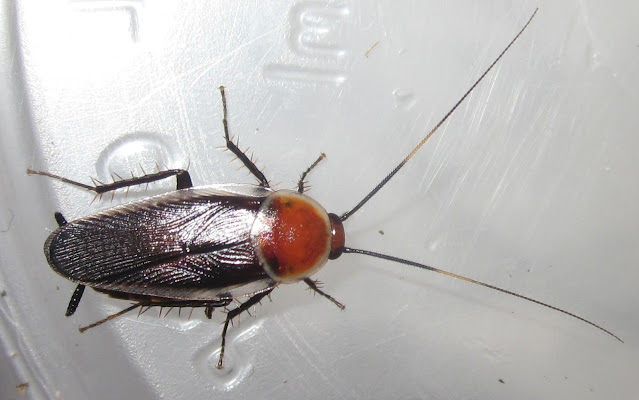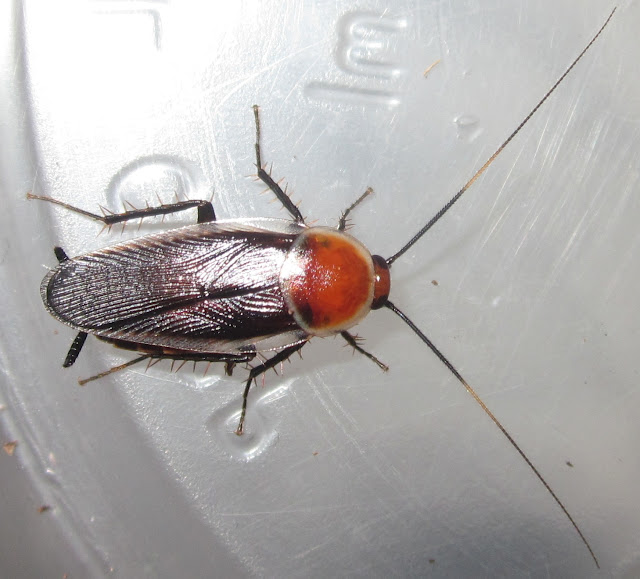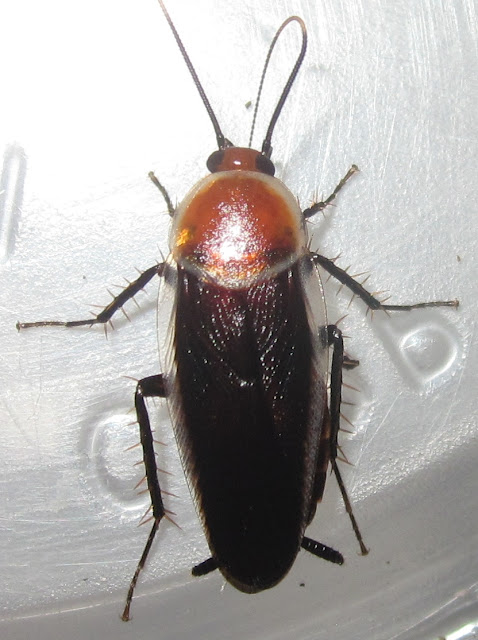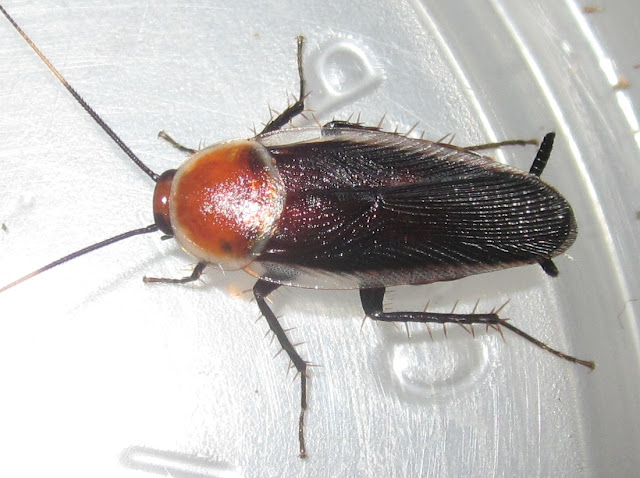Magnificent Beasts 2021 Package Series Pt. 3/7
Let's start off with the newbies, Dipteretrum hanstroemi, AKA "Hanström's Little Runners"! 😁 This small African species is similar to some North American Parcoblatta spp. in several morphological respects, however unlike Parcoblatta, the nymphs can climb. 😅
I've got my dozen or so individuals housed in a small, well ventilated enclosure with a thin layer of coconut fiber as the substrate. For hides I'm using bark and leaf litter. I'm keeping a corner of the enclosure humid, the rest pretty dry. They're being kept warm, about 75-85F°, and for food I'm using dog food and the occasional bit of fruit.
Sadly my two largest nymphs were subadult males, with no large female nymphs in sight, so I'll be waiting a while for the smaller nymphs to mature for actual breeding action.
However, both of the subadult males have matured, so I can at least show off an adult male. 😄 While adult males are fully winged, females look a lot different and have very tiny vestigial wings (similar to the sexual dimorphism of many Parcoblatta spp.).
Here are those pictures:
 |
| Subadult nymphs |
 |
| Adult male |
This species is rather underrated IMO, they've been in US culture for years now, but hardly anyone keeps them, let alone offers them for sale. Hopefully I can help change that by breeding them and then posting them for sale regularly. 🙂
Now onto the familiar face... When I left the hobby, I entrusted Brandon with the bulk of my Pseudomops septentrionalis "San Antonio, TX" colony. While they've had their ups and downs for him, he's kept them going this whole time, and he's just sent me back a starter colony, so I can breed them once again! 😁
A lot of people have difficulty breeding this species long term for whatever reason, but this strain's being going strong since it was initially collected for me by my friend Erin in 2016. I've always found them pretty dang easy to breed, only difficult part can be getting pairs to mature in sync when starting with small numbers of nymphs, since they tend to mature at very staggered rates.
Lucky me though, I received several subadults about to molt by chance in this group, and several of them have matured already! 😁
I've got mine set up in a moderately ventilated gallon container, with a thin layer of coconut fiber as the substrate. For hides I'm using bark and eggcrates, and I'm keeping them humid and fairly warm (75F° or so). For food I'm using dog food, fruits and pollen.
Here are some pics of one of the females:
A very nice species, and fairly popular in the hobby. Supply can be kinda sporadic with this species, so hopefully I can help make them a bit more consistently available in the future. 😄
Anyways, that does it for this post, thanks for reading, hope y'all enjoyed, stay safe, and I'll see everyone next time! 😉





























Fantastic to see a the new entries on your collection 🥰 the Pseudomops are so beautiful! I wish I could have some but like you said having them to sync being the trickiest part, I think it will be a real challenge to get them well started over here.
ReplyDeleteThanks! :) And honestly it shouldn't be too hard to get them established, it's just a matter of starting with enough individuals to counter the staggered growth rates (15-20 usually does the trick). It might be a whole until I have any available myself, but I know Schaben-Spinnen (a German vendor) sells this species for pretty cheap, and ships worldwide. ;)
DeleteI'm so happy to come across this. I kept being very confused with images on the web of these "Pennsylvania wood roaches", some the light amber color which is looks like a little friend I'm trying to identify, while others looks NOTHING like him. Now I know it's the sexual dysmorphia! Also, the one I have I think is a baby. It's much rounder and still quite small.
ReplyDelete